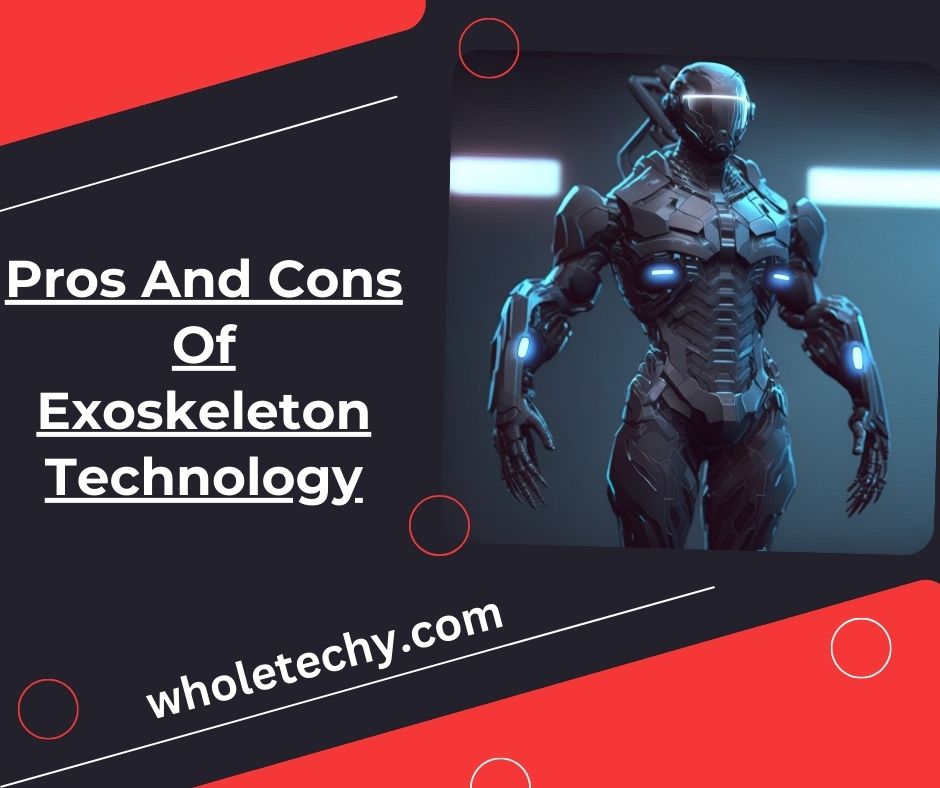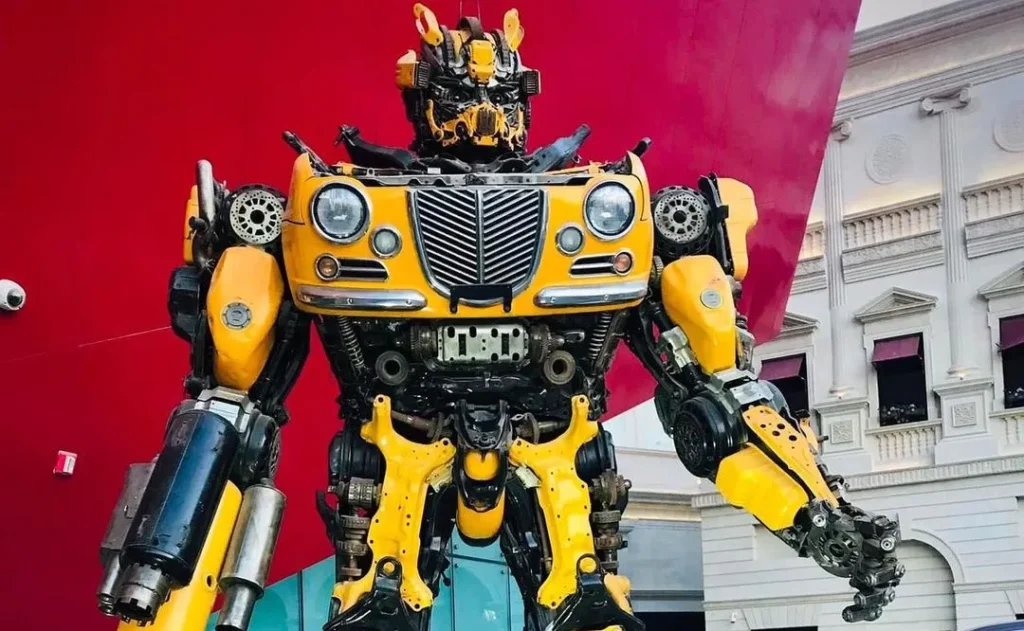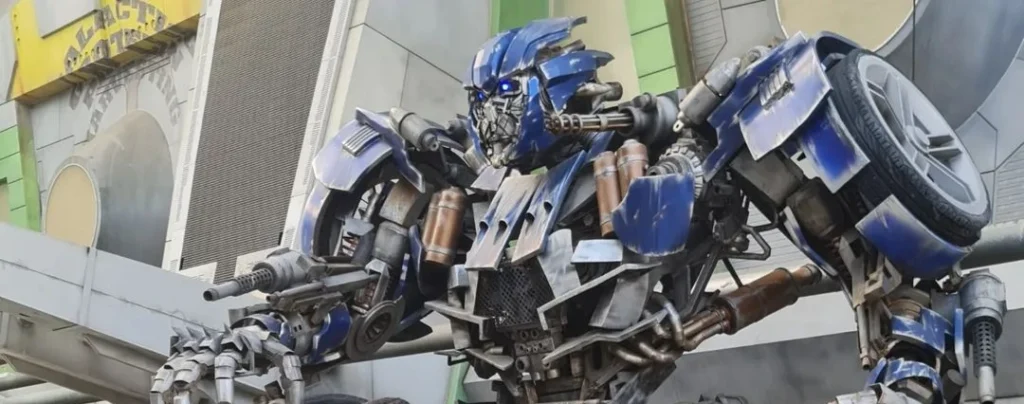
The world today is undergoing rapid changes, and exoskeleton technology stands at the forefront of innovation, promising to redefine the boundaries of human capability.
But what exactly is this marvel of engineering? Think of it as a wearable suit that amplifies our physical strengths, much like how a magnifying glass intensifies the sun’s rays. Intriguing, right? But, like all technologies, it comes with its own set of pros and cons.
How might it reshape industries, from healthcare to construction? And what hurdles does it face in its journey to mainstream adoption? Dive into this article, and let’s unravel the mysteries of exoskeleton technology together.
By the end, you’ll be equipped to weigh its potential against its challenges, sparking conversations and perhaps even igniting a passion for the future of tech. Ready to embark on this enlightening journey?
Pros of Embracing Exoskeletons

1. Enhancing Human Strength: Lifting Beyond Limits
The Marvel of Amplification
At its core, exoskeleton technology is like a power booster for the human body. It’s not just about lifting heavier objects; it’s about doing so with the same ease as picking up a feather. How? By distributing weight and leveraging mechanics to our advantage.
Real-World Application
In industries like construction, workers often grapple with heavy materials. With exoskeletons, lifting 200 pounds could feel as effortless as lifting a coffee mug. Isn’t that a game-changer?
2. Safety and Injury Prevention in High-Risk Industries
A Shield Against Injuries
The construction sector, among others, faces injury rates that are alarmingly high. But what if workers had an extra layer of protection? Exoskeletons can provide that shield, reducing strain and overexertion.
A Safer Tomorrow
By supporting and enhancing natural movements, these suits can drastically reduce workplace accidents. Who wouldn’t want a future where workers head home without aches and pains?
3. Customization: Tailoring Tech to Individual Needs
One Size Doesn’t Fit All
Just as we personalize our phones with apps, exoskeletons can be tailored to individual needs. Need more arm strength? There’s a configuration for that. Require support for your back? It’s covered.
Collaborative Development
Companies are actively seeking feedback to refine their designs. It’s like having a suit stitched to your measurements, but this one’s powered by cutting-edge tech. Ready for your fitting?
4. The Economic Upside: Long-Term Investment and Cost Savings
Beyond the Price Tag
Sure, exoskeletons come with a cost. But think of them as an investment. Over time, they can lead to significant savings, especially when considering reduced medical bills from workplace injuries.
Boosting Productivity
It’s simple math. Healthier workers + enhanced capabilities = increased productivity. And in the long run, that translates to economic growth. So, while there’s an initial investment, the returns? They’re promising.
By embracing exoskeleton technology, industries stand on the brink of a revolution. From supercharging human capabilities to ensuring safety, the benefits are manifold.
But as with all innovations, it’s essential to weigh the pros with the cons. As we delve deeper into this topic, let’s keep our minds open to the vast potential and the challenges that lie ahead.
Cons of Embracing Exoskeletons

1. The Price Tag: Evaluating Initial Investment Costs
Upfront Expenses
While the benefits of exoskeletons are numerous, there’s no skirting around the fact that they come with a hefty price tag. Even basic models can set companies back by thousands of dollars.
ROI Considerations
The question arises: will the initial investment yield sufficient returns? While long-term benefits are evident, the short-term financial strain can be a deterrent for many, especially smaller enterprises.
Shared Usage
One proposed solution is shared usage among workers. But then, doesn’t that limit the customization benefits we talked about earlier?
2. Mobility Concerns: Power and Motion Restrictions
Battery Blues
Imagine being in the middle of a task, and your exoskeleton runs out of juice. Current models have limited power supplies, making consistent operation a challenge.
Range of Motion
While they enhance strength, exoskeletons can also be restrictive. A human’s natural range of motion is vast. With a suit on, movements can become more cumbersome, akin to trying to dance in diving boots. Is the trade-off worth it?
3. Adaptability: Human-Machine Synchronization Issues
The Learning Curve
It’s not just about wearing the suit; it’s about adapting to it. There’s a period of adjustment, where humans and machines must learn to move in harmony.
One Step Forward, Two Steps Back?
While exoskeletons amplify strength, they might also introduce new challenges. For instance, rapid, intricate tasks might become trickier. Can we truly call it progress if it hampers certain abilities?
Feedback and Refinement
As with all tech, continuous feedback is crucial. But until perfect synchronization is achieved, there will be hiccups. Are industries ready to face them head-on?
While the allure of exoskeleton technology is undeniable, it’s essential to approach it with a balanced perspective.
Every coin has two sides, and while the pros of exoskeletons shine brightly, the cons present hurdles that need addressing.
As we continue our exploration, let’s remain grounded, understanding that the path to innovation is often paved with challenges. But then, isn’t overcoming challenges what innovation is all about?
The Future of Exoskeleton Technology
1. Integrating with Other Technologies: A Synergistic Approach
Beyond Isolation
Exoskeletons, while revolutionary, can achieve even greater feats when combined with other technologies. Think of it as a superhero team-up, where each hero brings a unique power to the table.
Brain-Computer Interfaces
Imagine a world where your thoughts can control the exoskeleton. By merging brain-computer interfaces with exoskeletons, we could achieve seamless human-machine integration. Sound like science fiction? The future might be closer than we think.
Functional Electrical Stimulation
Pairing exoskeletons with this technology could further enhance muscle strength and movement, especially beneficial for rehabilitation purposes. Why settle for one when a duo can do wonders?
2. Addressing Design and Usability Concerns
User-Centric Design
The future of exoskeletons hinges on designs that prioritize the user. It’s not just about strength but also comfort, flexibility, and ease of use.
Feedback Loop
Continuous feedback from users can lead to designs that address real-world challenges. After all, who better to guide improvements than the very people who wear them?
Speed and Motion
Current exoskeletons have their limitations in speed and range of motion. But with advancements in materials and engineering, might we see suits that rival our natural agility? The race is on.
3. Expanding Accessibility: Making Tech Available to All
Breaking Economic Barriers
The vision for the future is not just about advanced tech but also about making it accessible. Can we find ways to make exoskeletons affordable for all, from large corporations to individual users?
Global Reach
From urban centers to remote villages, the potential of exoskeletons is universal. But how do we ensure that everyone, regardless of location, can benefit?
Training and Education
As the tech becomes widespread, there’ll be a need for training programs, to ensure users can harness the full potential of their suits. After all, what good is a tool if one doesn’t know how to use it effectively?
Peering into the future of exoskeleton technology is akin to gazing into a realm of endless possibilities.
While challenges remain, the horizon is bright, shimmering with the promise of innovation, collaboration, and widespread accessibility.
As we stride forward, one question lingers: are we ready to embrace the future, with all its potential and pitfalls? Only time will tell, but the journey, no doubt, will be one for the ages.
Real-World Impacts of Exoskeleton Technology
1. Labor Market Transformations
Skill Evolution
As exoskeletons become commonplace, the skill sets demanded in various industries will evolve. Workers might need training not just in their core tasks but also in operating these advanced suits.
Job Dynamics
Will certain roles become obsolete with machines amplifying human capabilities? Or will new positions emerge, centered around the maintenance, customization, and operation of exoskeletons?
Productivity Surge
Enhanced strength and reduced fatigue could lead to faster project completions, potentially reshaping timelines and workflows. But what does this mean for labor costs and work hours?
2. Ethical Considerations in Enhanced Abilities
The Fairness Question
If only certain individuals or companies can afford exoskeletons, does it create an uneven playing field? How do we ensure equitable access to such transformative tech?
Dependency Concerns
long run?
Identity and Enhancement
Where do we draw the line between natural human abilities and technologically enhanced capabilities? Are we still “human” if our strengths are machine-augmented?
3. Setting Standards: Safety and Regulatory Measures
Safety Protocols
As with any technology, there’s potential for malfunctions. Establishing rigorous safety checks and protocols will be paramount.
Regulatory Frameworks
Governments and international bodies might need to step in, setting guidelines for exoskeleton production, usage, and maintenance.
Certifications and Training
Just as one needs a license to drive, will there be certifications required to operate an exoskeleton? Ensuring proper training can mitigate risks and ensure optimal usage.
The integration of exoskeletons into our daily lives isn’t just about the tech itself. It’s about the ripple effects it creates in our societies, economies, and personal identities.
As we stand on the cusp of this new era, we must ask ourselves: are we ready for the challenges and opportunities that come with it? And more importantly, how can we shape this future to be inclusive, safe, and truly beneficial for all?
Conclusion
Alright, let’s dive into this exoskeleton tech thing. You know how in some movies, characters wear these cool suits that make them super strong? That’s basically it.
But, life’s not a movie, and while these suits can make lifting a breeze, they come with their own set of hiccups.
Imagine shelling out big bucks for one, only to find out it’s a tad too complex or, worse, it runs out of battery mid-lift.
It’s like attending a party where only a few people get fancy drinks and the rest drink tap water.









